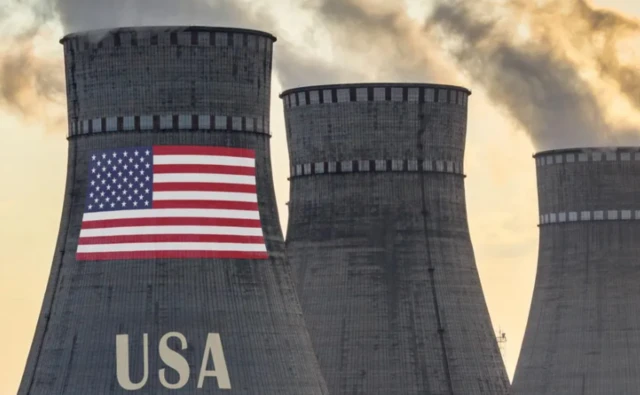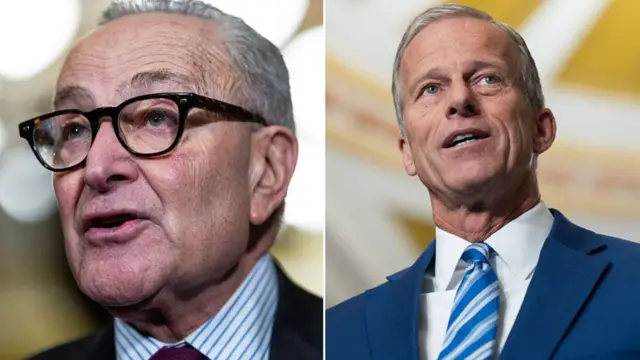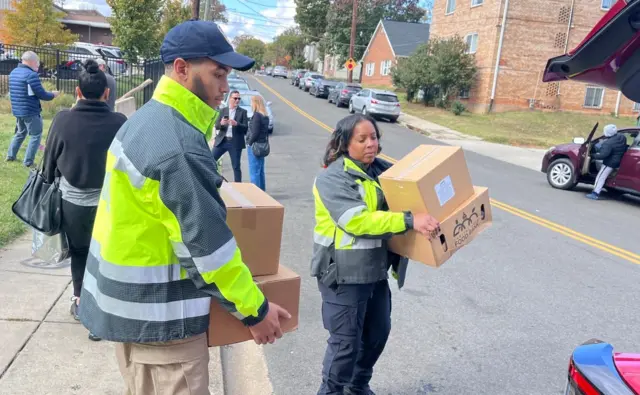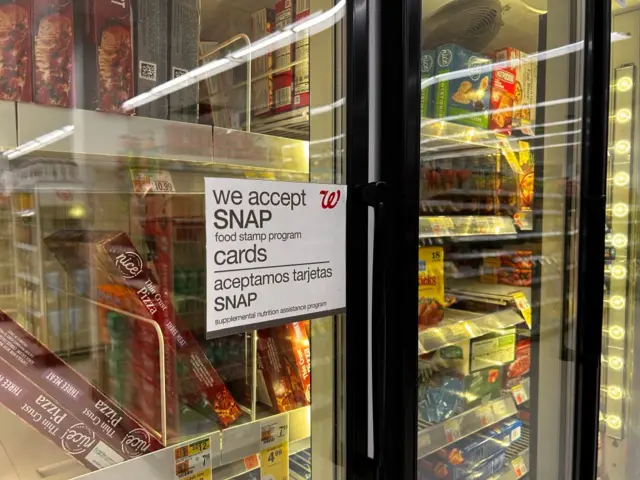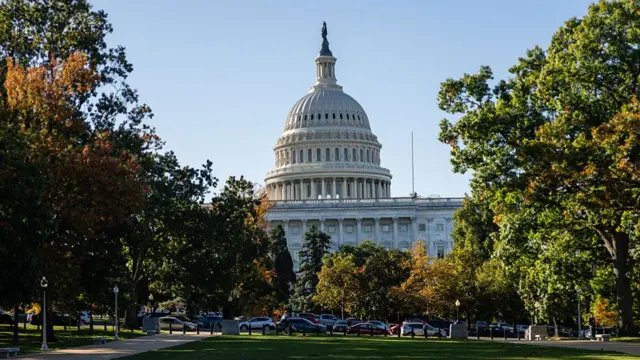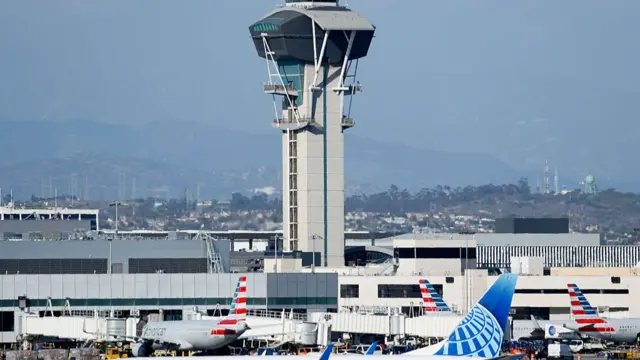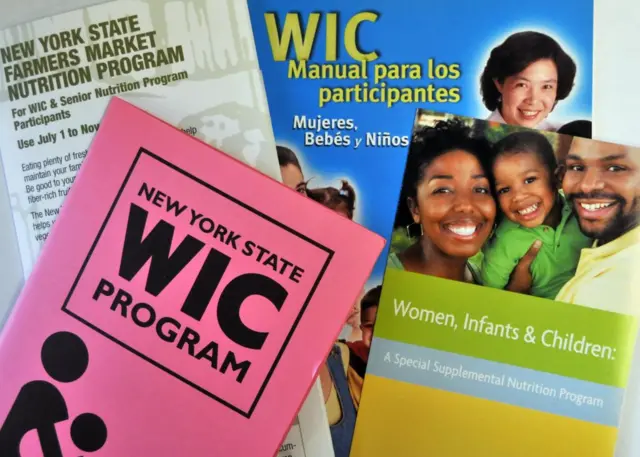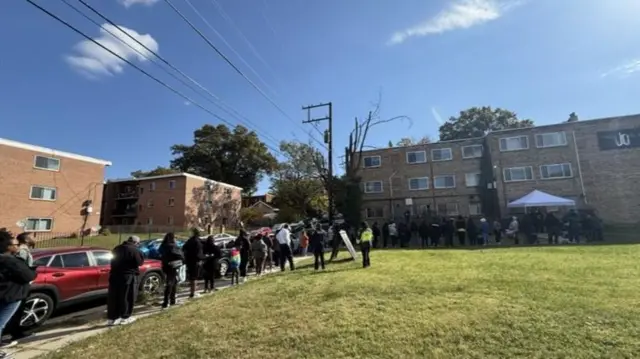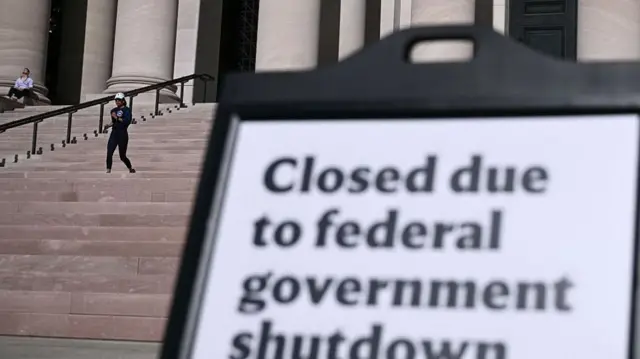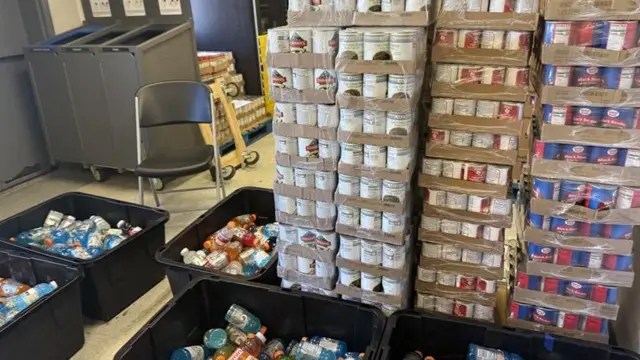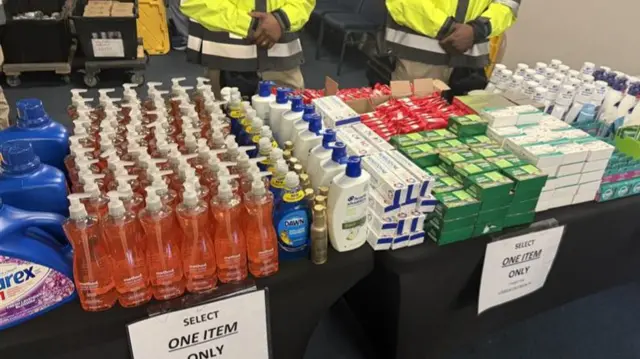Shutdown drags on as federal workers queue for free mealspublished at 20:53 BST 24 October
 Sakshi Venkatraman
Sakshi Venkatraman
Reporting from New York
US federal workers have now missed one full paycheck as the government shutdown extends into day 24.
This is now the longest full government shutdown in US history - and the second longest of any shutdown, including partial closures. Here are the top lines from today:
- Furloughed federal employees started queuing for free meals at food banks, and they say they can no longer make ends meet
- "We are just trying to make it day by day," one federal worker who lined up to receive food in Washington DC told us
- 1.4 million people are on unpaid leave or working without pay - others have been laid off entirely at the direction of the Trump administration
- Democrat and Republican lawmakers are still at a standstill, and there is no agreement in sight to fund the government
- A dozen votes on a Republican continuing resolution have now failed in the Senate
We're going to end our live coverage here soon, but we will continue to have the latest for you on the impacts of the shutdown as it extends into a fourth week.
Thank you for joining us.
